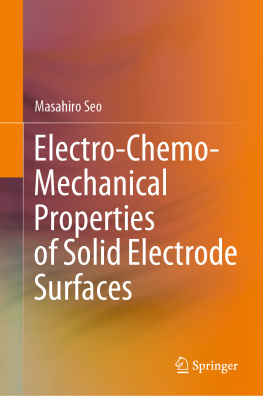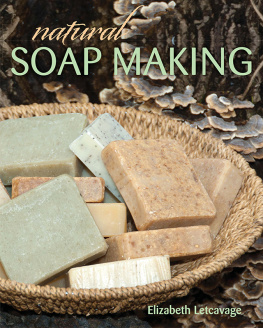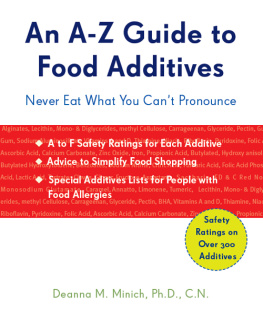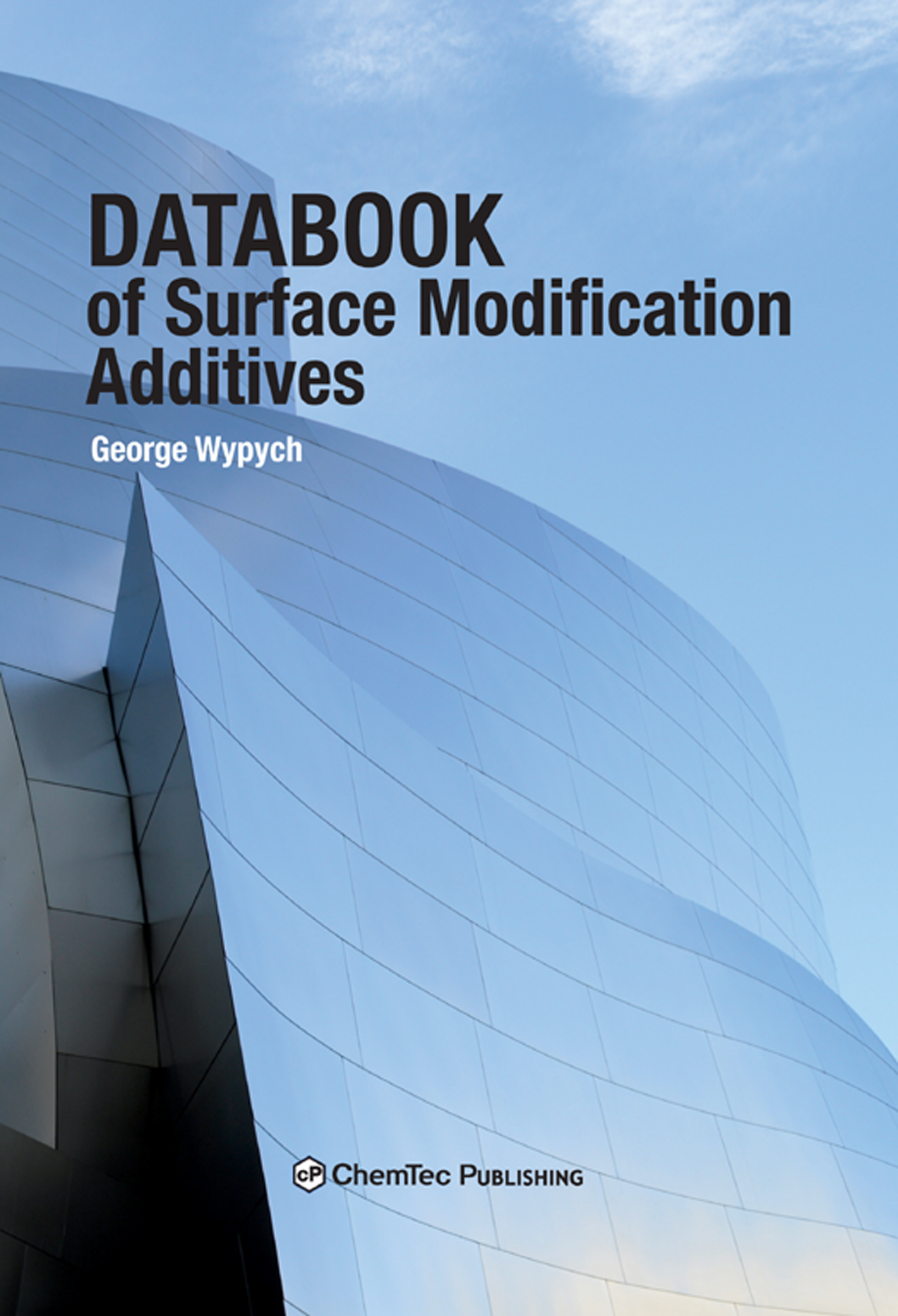Table of Contents
Landmarks
Databook of Surface Modification Additives
George Wypych

Copyright
Published by ChemTec Publishing
38 Earswick Drive, Toronto, Ontario M1E 1C6, Canada
ChemTec Publishing, 2018
ISBN 978-1-927885-35-2 (hardcover)
ISBN 978-1-927885-36-9 (PDF)
Cover design: Anita Wypych
All rights reserved. No part of this publication may be reproduced, stored or transmitted in any form or by any means without written permission of copyright owner. No responsibility is assumed by the Author and the Publisher for any injury or/and damage to persons or properties as a matter of products liability, negligence, use, or operation of any methods, product ideas, or instructions published or suggested in this book.
Library and Archives Canada Cataloguing in Publication
Wypych, George, author
Databook of surface modification additives / George Wypych.
Includes bibliographical references and index.
Issued in print and electronic formats.
ISBN 978-1-927885-35-2 (hardcover).--ISBN 978-1-927885-36-9 (PDF)
1. Coatings. 2. Surfaces (Technology). I. Title.
TA418.9.C57W97 2018667.9C2017-905285-3
C2017-905286-1
Printed in Australia, United Kingdom, and United States of America
Introduction
Ten groups of additives are commercially available for improvement and surface modification of manufactured materials. These include additives improving anti-scratch and mar resistance, gloss, surface flattening, tack reduction, tack increase (tackifiers), surface tension reduction and wetting, surface cleaning, hydrophobization, anti-cratering and leveling, and coefficient of static friction. A large number of final products benefit from application of these additives, with major groups of industrial products including adhesives, appliances, automotive, bookbinding, building and construction, business machines, cellular phones, coatings, concrete, electronics, flooring, footwear, furniture, graphic arts, lacquers, leather, optical films, packaging, paints, paper, plastics, printing inks, rubber, sealants, wire and cable, and wood.
Databook of Surface Modification Additives contains extensive data on the most important products in the use today. The information on each additive included in the Databook of Surface Modification Additives is divided into five sections: General information, Physical properties, Health and safety, Ecological properties, and Use & performance. The data belong to almost 130 data fields, which accommodate a variety of data available in the source publications. The description of each section below gives more detail on the composition of information.
In General information section, the following data are displayed: name, CAS #, EC #, Acronym, Active matter, Bio-renewable content, Bromine number, Chemical class, Common synonym, Empirical formula, Functional group, Mixture, Mn, Mw, Mw/Mn, Mz, Moisture content, Moisture contents, Name, Product composition, Residue after calcination, and Solids content.
Physical-chemical properties section contains data on State, Odor, Color, Color (Gardener), Color (platinum-cobalt scale), Acid number, Acidic residue, Boiling point, Bulk density, Cloud point values of DACP, EMDA, MMAP, ODM, and OMSCP, Density, Erichsen scratch visibility test, Evaporation rate, Gel sediment, Glass transition temperature, HLB value, Hydroxyl number, Iodine number, Kinematic viscosity, Melt flow rate, Melting point, pH, Refractive index, Relative density, Softening point, Solubility in solvents, Solubility in water, Specific gravity, State, Static coefficient of friction, Surface tension, Vapor density, Vapor pressure, Viscosity, Volatility, Water absorption, and Yellowness index.
Health and safety section contains data on Autoignition temperature, ADR/RID class, Agency ratings, Carcinogenicity by ACGIH, IARC, NTP, and OSHA, Chronic health effects, Derived no effect level, Dermal LD50 Guinea pig, DOT Class, Eye irritation, Explosive LEL, Explosive UEL, Exposure limits: ACIGH, NIOSH, and OSHA, Exposure personal protection, First aid: eyes, skin, and inhalation, Flash point, Flash point method, HMIS Health, HMIS Fire, HMIS Reactivity, Hazard class, Hazardous combustion products, ICAO/IATA class, IMDG class, Ingestion effect, Inhalation effect, Inhalation LC50 Rat, Mutagenicity, NFPA Health, NFPA Flammability, NFPA Reactivity, Rabbit dermal LD50, Rat oral LD50, Skin irritation, Teratogenicity, UN number, UN Risk Phrases, R, and UN Safety Phrases, S.
Ecological properties section contains data on Aquatic toxicity LC50 (Green algae, Bluegill sunfish, Daphnia magna, and Fathead minnow), Bioaccumulative (BCF factor), Biodegradation probability, and Partition coefficient (log Koc and log Kow).
Use & performance section contains information on Manufacturer, Outstanding properties, Potential substitute, Recommended for polymers, Recommended for products, Recommended applications, Processing methods, Concentration used, and Food approvals.
The above data are given, whenever available, for approximately 360 of the most important surface modification additives produced and used today.
The data included in Databook of Surface Modification Additives represent major suppliers and are based on the most recent available information regarding additives selection. The examples of application are also discussed.
Information on data fields
The fields used in the databook are listed in the alphabetical order. The information on data in a particular field includes a glossary of term, unit of measurement, typical methods used to measure quantities available in the databook.
ACID NUMBER
Twenty-five grams of an additive is placed in 125 ml Erlenmeyer flask and 50 ml alcohol is added to dissolve the sample. If the sample is not completely soluble, 50 ml of equal amounts of alcohol and acetone are used. This sample is titrated with 0.01N NaOH or KOH in the presence of bromothymol blue used as an indicator. ISO standard uses a method of titration similar to just described ASTM standard but phenolphthalein is used as an indicator and 0.1 N NaOH is used as a titrating agent. The results are expressed in mg KOH per 1 g of sample.
ACID RESIDUE
The determination of residue acid is carried out by evaporating sample to dryness.
ACRONYM
Abbreviations of additive names can be found in the standard terminology (ASTM D1600-14 Standard Terminology for Abbreviated Terms Relating to Plastics). ISO standard has a separate section for symbols used for some additives (ISO 1043-2:2011 Plastics Symbols and abbreviated terms Part 2: Fillers and reinforcing material). Abbreviations of some surface modification additives used in rubber may be given in a separate standard (ISO 6472:2010 Rubber compounding ingredients Symbols and abbreviated terms). In most cases, abbreviations are created for convenience by manufacturers and users.
ACTIVE INGREDIENT
Active ingredient gives the percentage of additive in the total weight of the commercial additive.
ADDITIVE APPLICATION
Non-systematic classification of surface modification additives based on their preferential use in surface modification.








